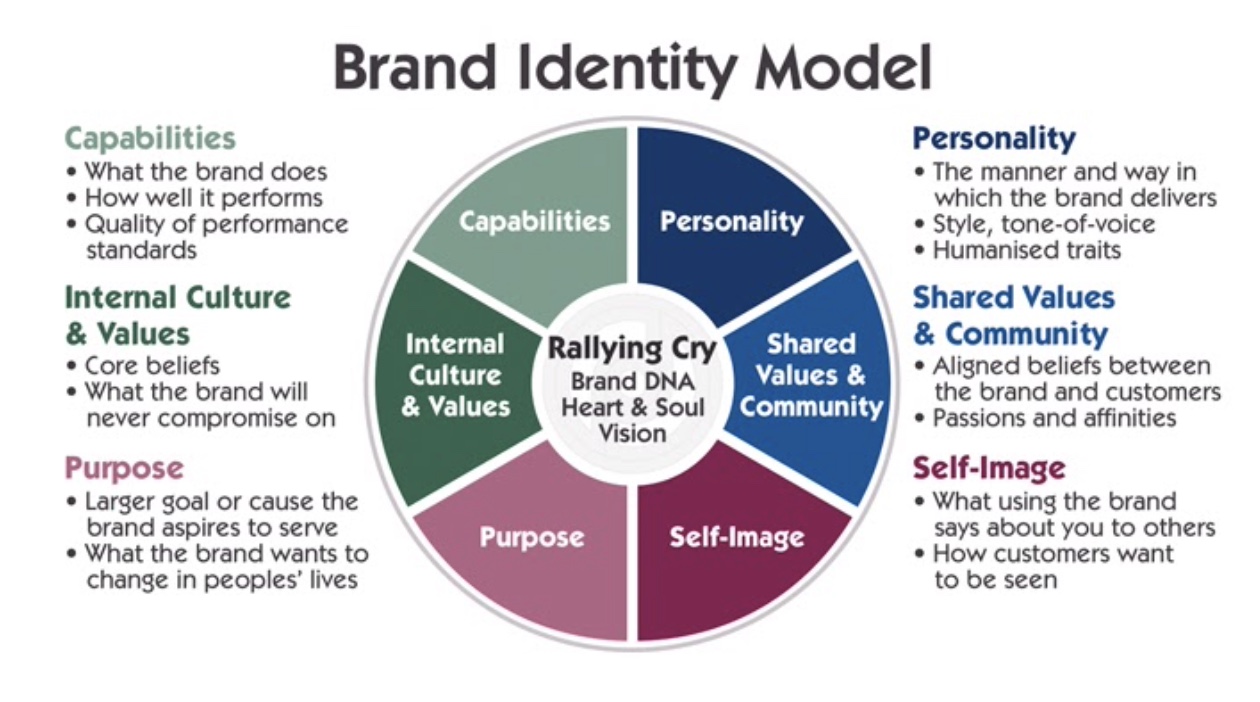How to Build a Strong Brand? The Ultimate Guide
Marketing a companycan seem like a straight-forward process of developing content, running paid ads, and engaging the audience. But is this mechanism adequate to produce sales and revenue? How does a marketer create a powerful brand image that interacts with the target audience, encourages purchases, and boosts brand loyalty?
Potential customers become loyal customers as they start to have an emotional connection with a company. In a study, around 60 percent of shoppers said they want to purchase from brands they trust, and 21 percent said they bought because they liked the brand. Let’s face it, the problems of the marketer are much more than they seem to be. Building a trustworthy brand is not just a piece of cake. It takes a strategic approach to establish a distinctive brand identity that stands out amid the clutter.
Are you struggling to build a strong brand personality that generates resonance among potential buyers? In this article, I will address the basics of branding and how you can build a strong brand for your business. Let’s jump right into the details!
What is a brand?

A brand is a set of associations that people have about a product or a company. People have personalities, and businesses have brands. Your brand helps to decide how people feel about your company, and how they will describe it to their friends and families. A person is more than their face, and a brand is more than its logo. It’s also about how that brand behaves, the aesthetics it pursues, and the quality of its product.
Little Lemon, for example, has a specific look and feel. The way it looks and sounds is the product of the founders’ decisions, both consciously and unconsciously, as they set up the restaurant. When Adriano articulates this look and sound, he describes the Little Lemon brand.

Your brand should be consistent wherever and whenever your customers interact with your company. This includes its physical location (if any) and online presence, such as its website or stores on eCommerce marketplaces. It also provides marketing materials and customer service. A consistent brand will make it easy for people to identify your business, no matter where they interact with it. Apple can’t be mistaken for any other brand in the world thanks to its branding consistency.
Why is having a brand important?

A Brand Define Who You Are As A Business
As mentioned above, branding is way more than just an image (a.k.a a logo). It includes anything you do or claim to do as a business. In other words, your brand is the sum total of views, ideas, and knowledge of your customers about your business. It’s the face, the personality, and the ideals of your company – and everything in between.
More importantly, every aspect of your business – your social media profile, the tonality of your voicemails, or the way you present and deliver your service – captures the essence of your identity and sends an implicit message about who you are as a business. Beyond that, the brand stands for what you believe in and how you want to be viewed by your audience. That’s why branding is so important to a company.
A Brand Signify Your Claims
Branding represents the bold proclamation that your company has made. It shows your audience that you’re in the business of doing honest business and that you’re to keep all the promises made by your company. Anything that your company exemplifies should be readily identifiable through the brand. Otherwise, the consumers would soon recognize the difference between what was advertised and what was actually delivered on the field.
Needless to say, this gap can be disastrous not only for your brand recognition but also for your overall well-being in your company. What this also means is that if you can’t back up your claims with the right action, you shouldn’t make them in the first place.
A Brand Goes Beyond Mundane Transactions
A brand’s uniqueness is that it is not limited to what transpires before a purchase is made. In reality, it has more to do with the kind of experience it brings to your audience at various points of contact on their journey, particularly after a business transaction.
- Did it serve the purpose it was intended to do?
- Was the product quality as good as you market it?
- What was the overall experience with customer service?
By answering these questions frankly, you have a better chance of building a loyal customer base that trusts you. It also helps you to match your marketing plans seamlessly with your wider business goals. In reality, a growing number of companies are realizing the value of branding in marketing.
A Brand Helps You Compete
By developing your brand and its reputation, you give your customers a legitimate reason to consider you before going elsewhere. Research also discovers that people prefer to buy from businesses with a trustworthy, reputable brand rather than businesses that don’t have a brand.

A Brand Establishes Trust
When your audience gets to know your company better, they’re going to start trusting you more. However, in order to build the elusive confidence factor, you have to say out loud why they should try you out. Here, creating a brand helps decide how the first few customers see the quality of your services.
Combining subject matter expertise with unmatched customer service and a deftly designed social media profile will ensure that you cover all bases. You must express the underlying message that every single action you take is to delight your customers and inspire them to keep coming back to you.
A Brand Creates New Revenue Channels
Let’s face it now. Most customers just don’t have the time or desire to find out why they should care about your brand even though you’ve built an informative website. Therefore, it is up to you to ensure that the brand addresses the all-important question on your behalf.
For example, how can you tell your friends about the beautiful golf gear that you’ve found incredibly helpful if you can’t even remember the brand? Every company needs to have a credible face – and branding also becomes a face that embraces its potential audience, delights them at every touchpoint of their journey, and ultimately wins their confidence – in that order.
Building brand identity is probably one of the most successful ways to spread the good news about your company. Equally, your marketing efforts, logo design, social media communication, and credibility must be compatible with each other to create a resounding impact on your audience. With all of that, you are more likely to successfully persuade your audience to become your active brand avocados and open up new profitable revenue sources.
A Brand Generates An Emotional Connection
If you give your customers a good reason about why they should care about your business and product (which can only happen if you persuade them about what you can do for them), they have a great reason to make the transition from fence-sitters to active buyers – in other words, to make a buying decision one step closer.
This is a significant point because, as mountains of studies tell us, it is emotion and not rationality that drives most buyers’ buying decisions. Humans are fond of thoughts, tales, concepts, and even items that touch the emotional nerve they love as an emotional species. Even emotions score a lot more than logic when it comes to brand loyalty.
This pattern was visible in the advertisements seen during the 2016 Rio Olympics. The most famous ads were those that merged emotions and common experiences to create an indelible emotional bond with viewers. Likewise, PG&E’s “Thank you Mom” commercial underpinned main concepts that originated from the lives of athletes whose mothers rescued them from potentially fatal circumstances and raised them in the best possible way.
Here, branding becomes a means of generating an emotional connection every time your customers stumble across your company or something that reminds them of it – through engaging storytelling – that engages your customers’ subconscious mind and creates an emotional bridge between the story and the brand.
The emotional side of branding will always remain important, particularly in today’s time when all businesses have a few seconds to engage emotionally with their audiences.
What are the elements of a strong brand?

Not all strong brands are the same, but they all share a set of universal elements that make them strong. Let’s find out what those elements are in this section.
Purpose-driven
A strong brand knows very clearly what it is, and what it isn’t. Rather than trying to be everything, it understands its purpose and goal and spends all its energy working to be exactly what it was intended to be and to solve the particular problems it was designed to solve.
Unique
Strong brands are conscious of their value proposition and can easily express how they stand out from the competition. They don’t leap into an over-saturated market and ride on the coattails of established brands–rather, they differentiate themselves through a brand message that also relates to specific characteristics and features that set them apart, above and beyond.
Knows its target market
A good brand is acutely tuned to whom it is most likely to purchase its product or use its service. All brand messages are intended to cater to this carefully studied market. It’s OK if a brand does not appeal to people who are unlikely to become a customer.
Stays on-brand at all times
Strong brands must convey clearly and regularly who they are (both features and personality) in any of their official communication. This obviously doesn’t mean that a company needs to be too serious – unless it’s part of the brand personality! It also means that it’s OK to be funny, smart, or frantic, but only if the brand has those qualities in its character. This means that every press release, memo, tweet, and even Instagram post needs to be viewed through the brand’s personality lens, and every representative of the brand needs to be aware of when and how they need to represent the brand in all marketing, PR, customer service, as well as social media.
Genuine
Brands that stand the test of time don’t pretend to be things they’re not. Although this is close to being purpose-driven, it is more specific. Being authentic means that not only does a brand strictly identify who it is (purpose), but it also guarantees that “who it is” is who it really is. In other words, strong brands don’t fake things.
Thick-skinned
All brands get negative feedback at some point (or even all the times), no matter how well the brand is strategized, presented, and executed. Some feedback is legitimate in situations where a brand has made a mistake or wants to correct a mistake. Often, “haters are just going to hate.” Never more than in the very public domain of social media, a thorough branding strategy requires a branded plan to handle consumer dissatisfaction, respond to negative press and negative reviews, and correct errors.
Visually striking
Strong brands have a logo and colors that are distinctive, easily identifiable and congruent with the personality of the business. And it needs to be visually consistent all over the site. This type of “picture” will say a thousand words about a company, and any minor deviation will at best be misleading to consumers, or even worst make it look like to customers that the business doesn’t take itself seriously.
How to build a strong brand?

Building a strong brand for your business is one of the most critical steps in building a successful company. It gives the business a distinct identity and creates a differentiated market place that attracts the right customers. It’s really critical, therefore, that you have a strong brand. Follow these tips to create a powerful brand for your company.
Define the Brand’s Core Values
Every company exists for a reason that goes beyond making money and producing income. The core value proposition of a brand is embedded in its broader objectives. Simon Sinek discusses how some of the most popular organizations can convey “Why they’re doing what they’re doing.”
Businesses may be manufacturing vehicles, but their goal may be far beyond that: to ‘develop revolutionary technologies that include sustainable, environmentally friendly transport,’ for example. The core values of a brand derive from its vision; it comes down to only a few emotional terms.

Core values make a company more human and relatable – what makes it distinct from its rivals. Brand-persons can be outdoor, adventurous, and sporty like Redbull, or they can be motivational, friendly, and enthusiastic like Nestle. Purpose-oriented and value-driven companies draw audiences and customers who are committed to their ambitions, aspirations, and personalities.
Be Consistent
My neighbors know me as someone who’s trustworthy and kind, but if I steal anything or break the law, my reputation will go down in a matter of seconds. It’s the same for brands, too, identifying the core individual of a brand is just the tip of the iceberg, and it’s important for marketers to stand by it through consistent messaging.
It takes 5 to 7 impressions to create an iot of brand awareness; brand recognition happens by repetition. Emotional values of a brand should be expressed in any communication: website, brand logo, blog posts, emails, videos, imagery, social media, and paid campaigns.
Marketers need to establish guidelines so that each message carries the tone and voice of the brand. The guideline allows marketing departments to use the right words, colors, graphics, and pictures. Consistent messaging adds power to the voice of the company and makes the individual new in the minds of the target customers.
Take a Customer-Centric Approach
The role of the marketer is to empathize with the audience and their feelings. Understanding the desires and expectations of potential and current customers helps to deliver the right messages through the right channels.
Audience persona lets advertisers learn about the issues, values, and objectives of the audience. In the digital age of preference, consumers favor brands that understand their choices. 91 percent of customers are more likely to buy products that have relevant deals and recommendations.
AI technologies allow marketers to get deep into the audience’s preferences to personalize their marketing activities. Marketers can monitor website sessions to understand, for example, the product preferences and content preferences of potential customers.
Another good approach is to track brand references and evaluate online discussions about your brand. Sentiment analysis allows marketers to know what works with the audience and to take corrective action when possible. When you understand your customers and deliver personalized experiences, they feel good about the relationship and become loyal customers.
Build Trust
According to PwC’s Consumer Insights Survey conducted in 2018, 14 percent of respondents claim trust as their number one reason to select a business. It’s because of confidence that customers don’t think twice before purchasing from major brands like Apple, Toyota, Oracle, etc. Credibility is a key component of a good brand. So how can businesses build trust in their brand?
Displaying Social Proof
Potential customers want to hear about your current customers and their experience with your goods and services. Strong customer feedback and testimonials serve like a living evidence of the value of the offerings. Marketers need to emphasize such consumer experience in their communication through marketing channels.
You can use Product Review - Photo Reviews to display customer testimonials on your product pages for free!

Showcasing Media Coverage
Having press coverage on well-known newspapers and news publishers is another way to create a positive brand image among target customers. You can reach out to journalists in your niche and offer expert input on current news and developments. Another way to get exposure in niche magazines is by pitching and writing guest stories.
Creating content
Authentic and original content is the key for brands to stand out. It’s hard to disregard the value of informing and entertaining the viewer with branded material that comes with a distinct style. Creating content creates trust and loyalty among potential customers. Savvy marketers tell brand stories by revealing the company’s behind-the-scenes – they reveal the real-life challenges and successes of those who run the business.
Managing Customer Experiences
The success of a brand depends on the basis of meeting the needs of its customers. Happy customers go out and out and spread the message, and so do the disappointed ones. Delighting consumers through quality service and brand experience is a long way to go as a trustworthy brand and receiving referrals. The toughest part of developing a rock-solid brand is building confidence in the target audience. It may be a grueling operation, but it pays off well in terms of sales and income for the company.
Have the Right Channel Strategy
There are numerous online sales channels that businesses can rely on these days, such as Facebook, Amazon, eBay, etc. Each marketing platform has its characteristics and its audience. It is crucial to choose the right medium to solidify the brand’s identity in the midst of those who matter.
A B2B company will benefit from relying on a social network like LinkedIn, for example. On the other hand, Instagram works well for niches such as travel, food, fashion, etc. Choosing a selection of platforms that complement your brand is essential for your message to be heard. Brand building is a phase that is cumulative. The right channel will help you generate faster brand growth and better returns from promotional activities.
Create a brand manifesto
Create a general manifesto for your branding and stick to it as if it is your bible. Your company’s statement of principle and what it stands for will build an emotional bond with your customers. This will require outside support since it is difficult to establish a value system. Copywriter’s support in vocalizing what the organization stands for will go a long way.
If you can afford the price, employ a copywriter with experience writing manifestos for the business. A consistent brand strategy will help you and your team coordinate every post, campaign, and customer engagement with your branding.
Red Bull is a perfect example of a business that looks at their brand backwards and aligns its message with its branding. They’re making advertisements about taking life to the limits and extreme sports, not about drinking. This message speaks to their clients on an emotional level and is memorable.
Don’t follow your competition
If you’re not energized or toughened by this fact, you might have a difficult time ahead of you trying to create a brand. Competition is around you. For the faint-hearted, this can be a nerve wreck, and it can be easy to fall into the pit of having to continually change what you’ve come up with. But doing so would have the opposite effect since it needs to be consistent for branding to be successful. Remember that branding is part of your business’s DNA, and it’s who you are.
Final words
That’s it! I hope that you have learnt a great deal about how to build a strong brand from this article. Rome wasn’t built within a day, and neither will be a brand. Building a strong brand will take years, a lot of perseverance and courage, and I hope that this is where you get started. Please feel free to leave comments below for a further discussion on this topic.
New Posts






